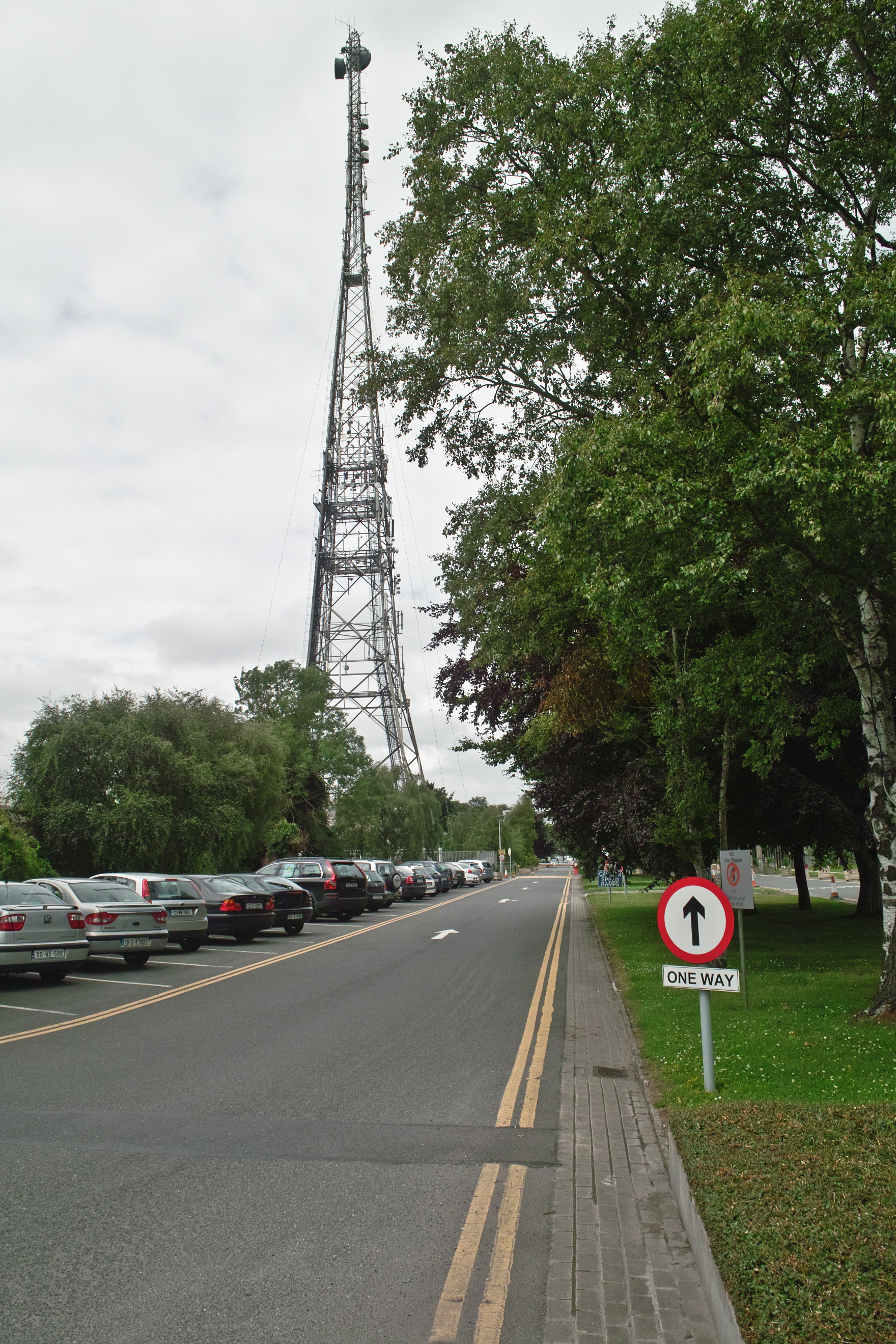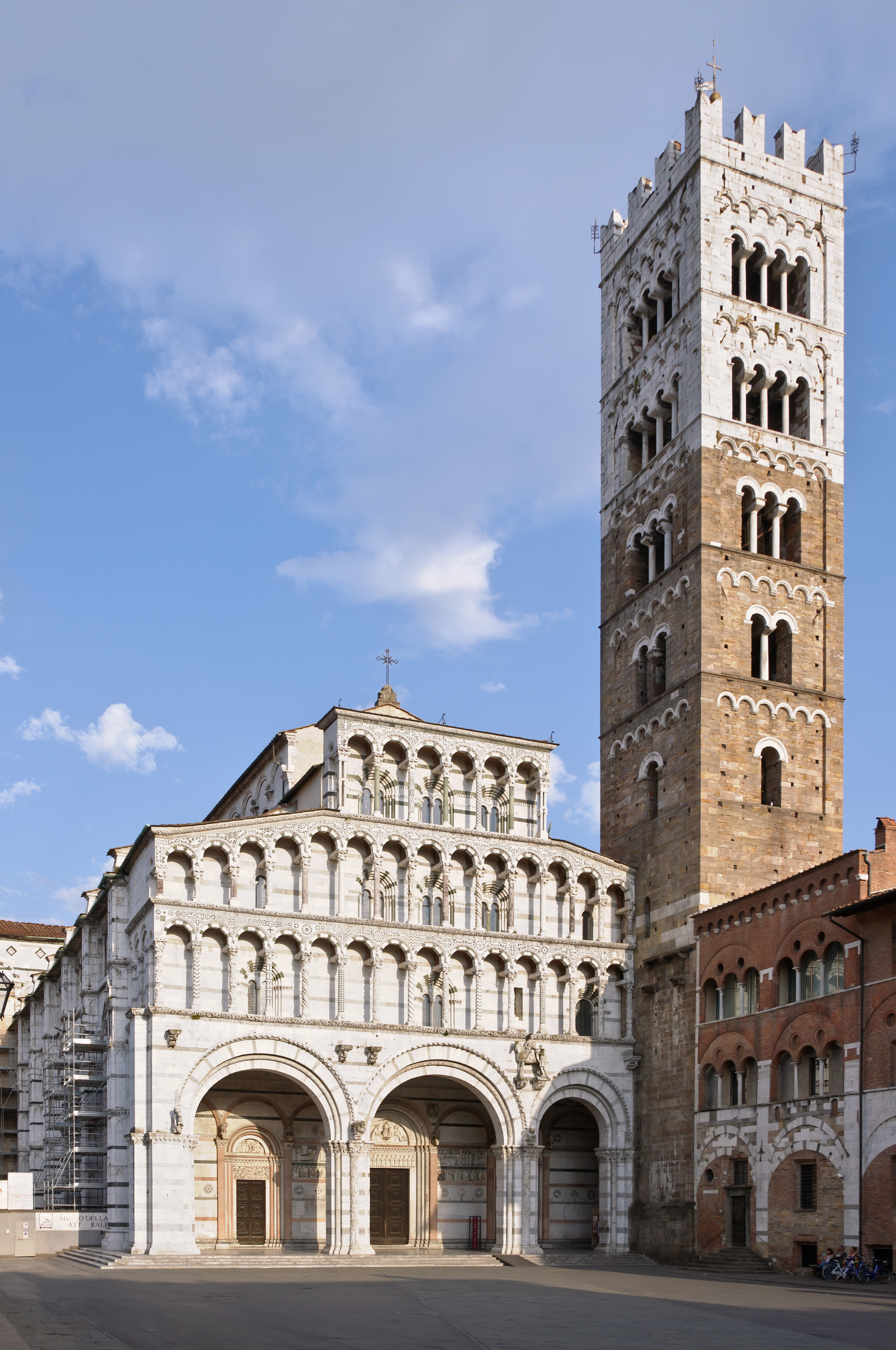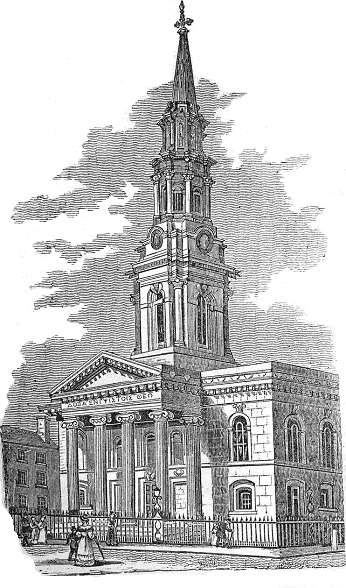|
Ship Street Little
Ship Street Little () is a street on the south side of Dublin, Ireland which stretches from the junction of Werburgh Street and Bride Street in the west to the corner with Ship Street Great and Cole's Alley in the east and is bookended by the Ship Street Gate of Dublin Castle in the east. The street is bounded to its north side by the city walls of Dublin which was first constructed c1250 as part of the early defences of Anglo-Norman Dublin. Running parallel and perpendicular to the street to the south is Chancery Lane. History In medieval times the area would have been located just outside of the city walls and was referred to as Poole Street. The River Poddle flowed along the side of the street, around the city walls and into the Dubh Linn (Black Pool) which gave Dublin its name. It also acted as a form of moat for the castle. The Pole mill was also situated near the corner of Bride Street, Werburgh Street and Ship Street Little. It was one of several mills in the area whic ... [...More Info...] [...Related Items...] OR: [Wikipedia] [Google] [Baidu] |
Dublin
Dublin is the capital and largest city of Republic of Ireland, Ireland. Situated on Dublin Bay at the mouth of the River Liffey, it is in the Provinces of Ireland, province of Leinster, and is bordered on the south by the Dublin Mountains, part of the Wicklow Mountains range. Dublin is the largest city by population on the island of Ireland; at the 2022 census of Ireland, 2022 census, the city council area had a population of 592,713, while the city including suburbs had a population of 1,263,219, County Dublin had a population of 1,501,500. Various definitions of a metropolitan Greater Dublin Area exist. A settlement was established in the area by the Gaels during or before the 7th century, followed by the Vikings. As the Kingdom of Dublin grew, it became Ireland's principal settlement by the 12th century Anglo-Norman invasion of Ireland. The city expanded rapidly from the 17th century and was briefly the second largest in the British Empire and sixth largest in Western Europ ... [...More Info...] [...Related Items...] OR: [Wikipedia] [Google] [Baidu] |
RTÉ
(; ; RTÉThe É in RTÉ is pronounced as an English E () and not an Irish É ()) is an Irish public service broadcaster. It both produces and broadcasts programmes on television, radio and online. The radio service began on 1 January 1926, while regular television broadcasts began on 31 December 1961, making it one of the oldest continuously operating public service broadcasters in the world. It is headquartered in Donnybrook in Dublin, with offices across different parts of Ireland. RTÉ is a statutory body, overseen by a board appointed by the Government of Ireland, with general management in the hands of a committee of senior managers, currently an interim leadership team, headed by the Director General. RTÉ is regulated by Coimisiún na Meán. It is financed by the television licence fee and through advertising, with some of its services funded solely by advertising, while others are funded solely by the licence fee. The current network consists of 4 main TV chan ... [...More Info...] [...Related Items...] OR: [Wikipedia] [Google] [Baidu] |
Attorney General Of Ireland
The attorney general of Ireland () is a constitutional officer who is the legal adviser to the Government and is therefore the chief law officer of the State. The attorney general is not a member of the Government but does participate in cabinet meetings when invited and attends government meetings. The current attorney general is Rossa Fanning, SC. Overview The office and functions of the attorney general are outlined in Article 30 of the Constitution of Ireland. The attorney general has always been a barrister rather than a solicitor, although this is not a requirement for the post. In cases where a barrister nominated by the Taoiseach to be the attorney general was not a senior counsel at the time, the government of the day has made them one first, as occurred in the cases of John M. Kelly and John Rogers. The attorney general advises the government on the constitutionality of bills and treaties, and presents the government's case if the President refers any bill to t ... [...More Info...] [...Related Items...] OR: [Wikipedia] [Google] [Baidu] |
Valle Di Comino
The Valle di Comino () is a valley in the province of Frosinone, Lazio, in central Italy. It runs from San Biagio Saracinisco to Vicalvi and is adjacent to the Abruzzo mountains. It grossly corresponds to the upper valley of the Melfa river, which runs through it before joining the Liri. History According to tradition, the name of the valley can be traced to ancient Cominium, destroyed in 293 BC. In Livy's ''History of Rome'', there are early references to Cominium as the site of a battle between the Samnites and the ancient Rome, Romans. Some suggest that the town of San Donato Val di Comino, San Donato is the ancient Cominium, others believe the battle site was at Vicalvi. The area was however already settled in prehistoric times; later it was inhabited by Oscan, Osco-Sabellian tribes. Its main center was Atina (FR), Atina, mentioned in Virgil's ''Aeneid''. In the Middle Ages, numerous castles were built in the valley, which was part of the Lombards, Lombard Duchy of Spoleto, ... [...More Info...] [...Related Items...] OR: [Wikipedia] [Google] [Baidu] |
Lucca
Città di Lucca ( ; ) is a city and ''comune'' in Tuscany, Central Italy, on the Serchio River, in a fertile plain near the Ligurian Sea. The city has a population of about 89,000, while its Province of Lucca, province has a population of 383,957. Lucca is known as an Italian "Città d'arte" (City of Art) from its intact Renaissance-era Walls of Lucca, city walls and its very well preserved historic center, where, among other buildings and monuments, are located the Piazza dell'Anfiteatro, which has its origins in the second half of the 1st century A.D., the Guinigi Tower, a tower that dates from the 14th century and the Cathedral of San Martino. The city is the birthplace of numerous world-class composers, including Giacomo Puccini, Alfredo Catalani, and Luigi Boccherini. Toponymy To the Ancient Rome, Ancient Romans, Lucca was known as ''Luca''. From more recent and concrete toponymic studies, the name Lucca has references that lead to "sacred grove" (Latin: ''lucus''), " ... [...More Info...] [...Related Items...] OR: [Wikipedia] [Google] [Baidu] |
Francis Johnston (architect)
Francis Johnston (1760 – 14 March 1829) was an Anglo/Irish architect, best known for building the General Post Office, Dublin, General Post Office (GPO) on O'Connell Street, Dublin. Life Johnston was born in Armagh, Ireland, the son of architect William Johnston and younger brother of architect Richard Johnston he later also studied architecture. He practised in Armagh, and then lived in Drogheda from 1786 before moving to Dublin about 1793. In 1805, he was appointed to the Office of Public Works, Board of Works as an architect. In 1824 he was made president of the Royal Hibernian Academy of Arts which had been founded the previous year, and he provided headquarters for the academy in Lower Abbey Street at his own expense. Works Two early projects were the completion of Rokeby Park, Rokeby Hall and Ballymakenny Church, Co. Louth, to the designs of Thomas Cooley (architect), Thomas Cooley in whose office he first trained. In 1789 he was commissioned by Richard Robinson, 1 ... [...More Info...] [...Related Items...] OR: [Wikipedia] [Google] [Baidu] |
John Speed's Map Of Dublin (1610)
John Speed's Map of Dublin (1610) was one of the first detailed maps of Dublin and the first published map of Dublin produced by cartographer John Speed around 1610 and printed first in London in 1611. It appeared as an inset in a map of the Province of Leinster in Speed's atlas ''The Theatre of the Empire of Great Britaine'' and features 69 placenames and other locations annotated at the side by symbols, geographic features or crude illustratrations. Speed's map combines information borrowed from other maps but also appears to have mapped most of the town plans himself. It is the oldest surviving map of the city of Dublin. The next authoritative map of Dublin wasn't until Herman Moll's map of 1714, which drew heavily on Speed's map, Charles Brooking's map of Dublin (1728) and John Rocque's maps from 1756 onwards. List of annotated locations See also * Charles Brooking's map of Dublin (1728) * Cartography of Dublin * Herman Moll * Joseph Tudor Joseph Tudor (1695–1759) ... [...More Info...] [...Related Items...] OR: [Wikipedia] [Google] [Baidu] |
Church Of St Michael Le Pole
The Church of St Michael le Pole (St Michael of the Pool) was an ancient pre-Norse church and ecclesiastic settlement in Dublin, Ireland which existed prior to the Norse invasion and creation of Early Scandinavian Dublin in the 9th century. It is believed the church may date from as far back as the 7th century. The church was located between present day Ship Street Little, Ship Street Great, Golden Lane, Chancery Lane and Bride Street. History Naming The church is often referred to in historical accounts as St Michael de le Pole. It is proposed by O'Donovan that the name 'Michael' is actually a Norman era phonetic corruption of the name MacThail, referring to Aengus son of Dergan who was one of three similarly named prelates of Kilcullen, County Kildare. The name 'le pole' refers to the pool which was created by the River Poddle to the south and east of Dublin Castle and gives Dublin its name from being a corruption of the native Irish term "Dubh Linn" meaning black pool. ... [...More Info...] [...Related Items...] OR: [Wikipedia] [Google] [Baidu] |
List Of Gates Of Dublin
The walls and fortifications around Dublin were raised by the Ostmen in the 9th century, and the majority of the cities in Ireland remained subject to incursions by native clans until the 17th century. The defences of Dublin would eventually fall into disrepair but continued to serve a purpose as late as 1762 when the auction of the rights to collect tolls at each of the then seven city gates raised £4,000 for the city. Below is a list of the historic Gates of Dublin along the city's ancient boundaries: See also * John Speed's Map of Dublin (1610) References {{History of Dublin Gates Gates Dublin Gates Gates is the plural of gate, a point of entry to a space which is enclosed by walls. It may also refer to: People * Gates (surname), various people with the last name * Gates Brown (1939-2013), American Major League Baseball player * Gates McFadd ... Dublin gates Dublin Gates ... [...More Info...] [...Related Items...] OR: [Wikipedia] [Google] [Baidu] |
River Poddle
The River Poddle () is a river in Dublin, Ireland, a pool of which (', "black pool" or "dark pool" in Irish) gave the city its English language name. Boosted by a channel made by the Abbey of St. Thomas à Becket, taking water from the far larger River Dodder, the Poddle was the main source of drinking water for the city for more than 500 years, from the 1240s. The Poddle, which flows wholly within the traditional County Dublin, is one of around a hundred members of the River Liffey system (excluding the Dodder tributaries), and one of over 135 watercourses in the county; it has just one significant natural tributary, the Commons Water from Crumlin. The Poddle rises in the southwest of County Dublin, in the Cookstown area, northwest of Tallaght, in the county of South Dublin, and flows into the River Liffey at Wellington Quay in central Dublin. Flowing in the open almost to the Grand Canal at Harold's Cross, its lower reaches, including multiple connected artificial channels, ... [...More Info...] [...Related Items...] OR: [Wikipedia] [Google] [Baidu] |
Republic Of Ireland
Ireland ( ), also known as the Republic of Ireland (), is a country in Northwestern Europe, north-western Europe consisting of 26 of the 32 Counties of Ireland, counties of the island of Ireland, with a population of about 5.4 million. Its capital city, capital and largest city is Dublin, on the eastern side of the island, with a population of over 1.5 million. The sovereign state shares its only land border with Northern Ireland, which is Countries of the United Kingdom, part of the United Kingdom. It is otherwise surrounded by the Atlantic Ocean, with the Celtic Sea to the south, St George's Channel to the south-east and the Irish Sea to the east. It is a Unitary state, unitary, parliamentary republic. The legislature, the , consists of a lower house, ; an upper house, ; and an elected President of Ireland, president () who serves as the largely ceremonial head of state, but with some important powers and duties. The head of government is the (prime minister, ), ... [...More Info...] [...Related Items...] OR: [Wikipedia] [Google] [Baidu] |







